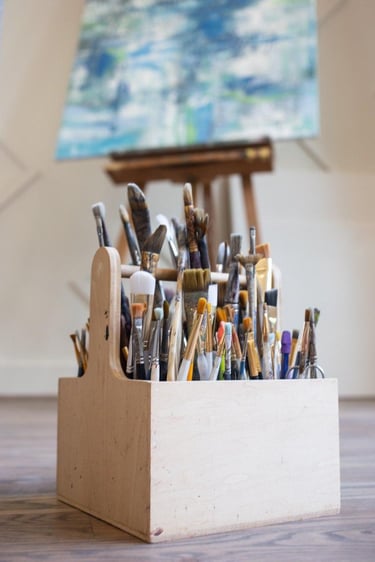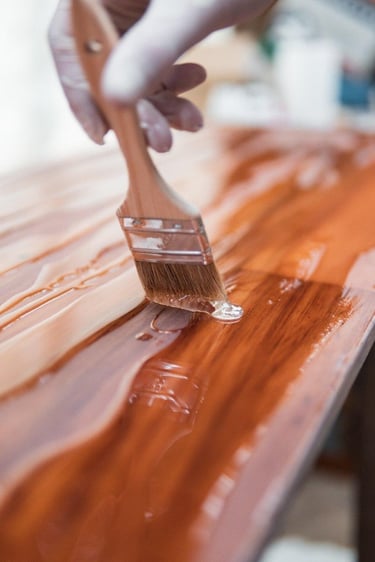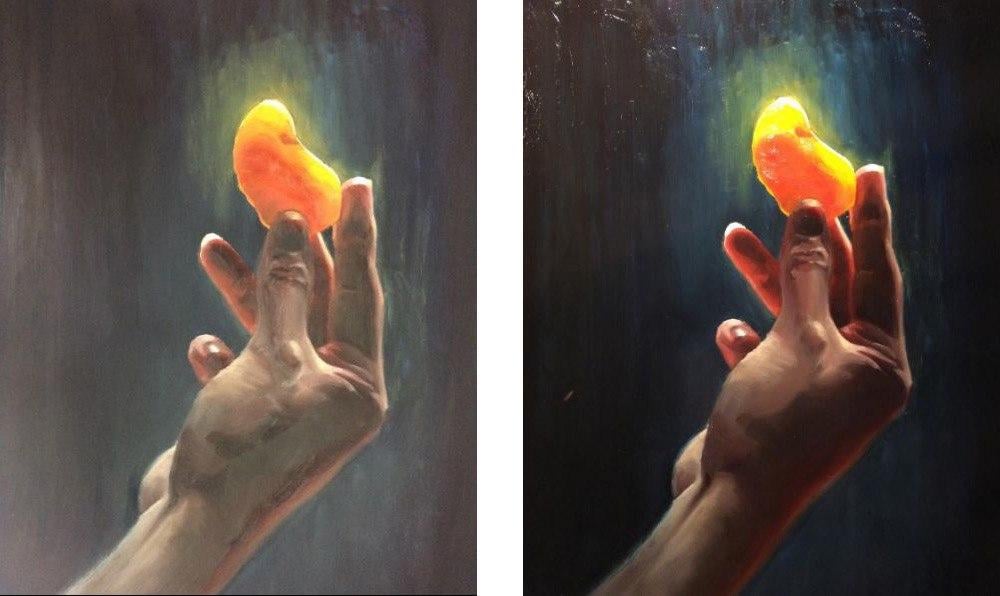Why should you varnish your oil and acrylic paintings? The three main reasons you should varnish your artwork are to protect your painting long term, create an even gloss sheen, and increase the vibrancy of your painting. Applying a varnish as a final coat can help increase the sellability of your artwork and add a professional touch to your art that really tells collectors that you know what you’re doing. We will show you what varnish is used for and how to apply varnish to a painting.
There are many different kinds of varnish, but the varnish we recommend should be removable. Varnish has been used for thousands of years, and having a removable varnish will help your collectors keep your artwork in the family for generations.
🎓 Ready to Become a Professional Artist?
Take your art, and your life, to the next level with the Milan Mastery Program ✨. Learn from world-renowned artists 🎨, master both classical and contemporary techniques 🖌️, and build a thriving art career doing what you love ❤️.
Apply now and start your journey to artistic mastery today 🚀.
In our professional experience, we recommend adding varnish to your paintings to increase the sellability of your art. There is a certain emotion that you feel when you can see a painting glistening on the wall. Collectors want to feel this emotion over and over. That is why they continue to buy varnished artwork.

What types of finished surfaces can be varnished?
Before you varnish, make sure that your paper or canvas is sealed with gesso. This will prevent paint and varnish bleeding through your painting and showing up on the back of your piece. Varnish is normally used as a final layer to help seal and protect your painting. You should only apply varnish to dried paintings. Avoid using an excessive amount of varnish to avoid clumping or buildup in uneven parts of your canvas surface. This tends to happen when you use a lot of texture in your painting. This leaves large areas for varnish to build up and make your painting look uneven. There are tons of different types of surfaces you can varnish. Anything you can paint on from canvas, paper, metal, plexiglass, or wood can be varnished. Following the instructions above will help make your acrylic paint look glossy and beautiful!
Types of Varnish
The four main types of varnishes are spray varnish for acrylic, liquid varnish for acrylic, spray varnish for oil, and liquid varnish for oil. Only use acrylic varnish on acrylic paintings. If you use acrylic varnishes on oil paintings, this will decrease the life of your painting by causing it to crack over time. This is why we recommend buying oil varnish first, since you can use it with all of your paintings without worrying about cracking. Finishing an acrylic painting and adding a coat of varnish is one of the most satisfying things you can do as an artist. There is just something special about seeing it all come together.
Choosing the finish type is another thing to keep in mind. The most popular finish for artists is damar varnish because of its simplicity and high gloss finish. Damar varnish can be applied with a brush or spray. If you don’t want a glossy finish, a matte varnish is something you might be interested in. Matte varnish can be used for lightening darker values. Satin varnish has a semi-gloss finish. This is perfect if you want the in-between of high gloss and matte. Retouch varnish is the last type of varnish. You would use a retouch varnish if you wanted to refresh a dull part of your painting or even out the sheen.

Preparing Your Painting
Before you varnish your painting, there are a few steps you need to keep in mind to keep your art safe. First, make sure that your painting is completely dry. This will make sure that the paint does not get smudged. Then wipe down the surface of your painting to remove any excess dust or debris. Place your painting on an even surface such as a table or workbench. Lying your painting down flat will make sure that drips of varnish won’t appear on top of your painting. Pour a small amount of varnish to start, to ensure that you don’t use too much varnish. If you pour too much varnish, it can pool in different parts of your painting, making it look uneven. If you are using a spray varnish, apply it six to twelve inches away from the artwork, spray from one side to the other, and spread the varnish evenly over the entire surface.
About the Isolation Coat
Applying an isolation coat to your acrylic paintings is very helpful for removing your varnish later down the line. An isolation coat does not bond to the absorbent parts of your paint, but rather sits on top. This makes it easy to remove without the risk of damaging your precious painting.

How to Varnish an Oil Painting
First things first, make sure you followed the steps in the “preparing your painting” section. Before you varnish your painting, make sure that you are in a well-ventilated room or wear a mask with air filters. The fumes from varnish are toxic and can lead to health problems. Once you have prepared your work area, double-check the surface of your canvas to ensure that no dirt, dust, or bugs are there that could get sealed into your painting. The last step is leaving your painting to dry. The fastest way to dry your painting is to put it in direct sunlight. In some parts of the world, this might not be possible, and that is why we recommend that your studio is well ventilated so that no fumes get trapped in your workspace. We would not recommend putting your varnished painting outside if it is a windy day because you might get miscellaneous debris that would fall onto your drying painting. Another important thing to note: do not use acrylic varnish for oil paintings! This will lead to cracking and decrease the lifetime of your art.
How to Varnish an Acrylic Painting
If you're thinking to yourself, “Should I varnish my acrylic painting?” The answer is yes because of the powerful painting protection that will make sure your painting stays safe long after you painted it. There is only one different step you need to take when applying varnish. Acrylic paintings can use both acrylic and oil varnishes. We recommend buying an oil varnish so that you can use it for all your paintings and not worry about it damaging your art.
How to Apply Varnish with a Brush
We recommend using a large, soft brush to get the best results. Make sure that your brush is clean and free from any excess paint that might get onto the surface of your art. If you plan on varnishing the sides of your painting, placing wooden blocks underneath your painting will make sure that it doesn’t stick to the table you are working on.
How to Apply a Spray Varnish
First, as always, ensure that the surface is clean and dry—this is important for any type of varnish you use. Then you can wipe the surface with a lint-free cloth to avoid adding any excess lint. Place your painting vertically or on a table to reduce the amount of dust that can stick to your painting. Shake up your can of varnish for about ten seconds, then start spraying. Some spray varnishes require you to shake the can for longer than ten seconds. Read the directions on your can of varnish to check if you are going to get an even finish. Apply the spray at a distance of six to twelve inches. The distance will vary depending on the flow of your spray. Don’t get too close to the canvas—or whatever media you painted on—because this can cause the varnish to pool or drip. While you are spraying, regularly check the nozzle for blockages. It is common for nozzles to get clogged if you are spraying for a long time. There are a few different ways to keep your nozzle clean. Using a nozzle cleaner spray, paint rag, or having a spare nozzle is the best way to keep your varnish flowing with no problems. Spraying your varnish over the edge and working in thin layers will give you even coverage. You can spray as many layers as you would like for a super glossy effect.

Final Coat
Varnishing paintings is the best way to protect your art and keep it in perfect condition for generations. We hope you got some clarity from this article on the best way to varnish your artwork. Applying a varnish can bring out the best vibrant colors in your art, but using the wrong varnish can damage your painting in the long term. If you want to learn more about how to paint and make a career from your art, check out our online Mastery Program 🚀. Become the artist you’ve always dreamed of being!

